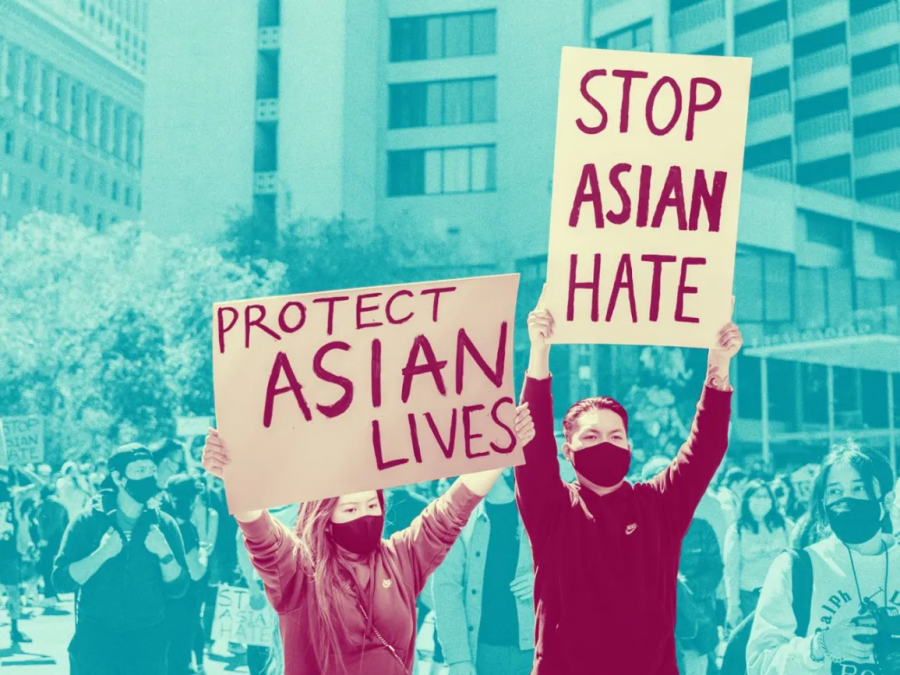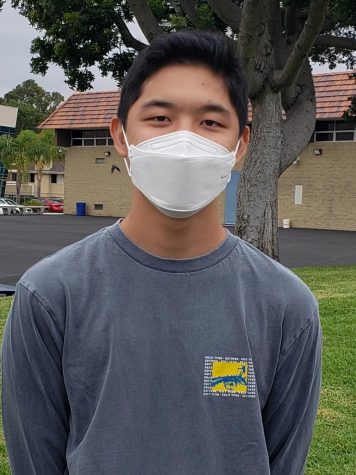Hate & Prejudice
May 18, 2021
833%. The percent increase in Asian-American hate crimes in New York City as cited by the Center for the Study of Hate and Extremism. While this statistic is certainly shocking, few experts in American history or racial studies would find that number surprising or unprecedented in terms of the spirit of the acts. 1.2 million Asians live in New York City, representing about 15% of the city’s population, and they have contributed to the diverse and world-centric portfolio of the metropolis for decades. However, it seems specific assailants have negated their contributions, their businesses, their art, their culture, and even their solidarity and responsibility in the face of a global pandemic in the past few weeks. The challenges presented to the AAPI (Asian and Pacific Islander) community question the integrity of the nation and what it means to be American, much like the BLM movement has.
To provide some background information on the attacks against members of the Asian-American community, many might be led to believe that Covid-19 is the reason for the spike in violence, assuming Asians are being scapegoated for the events of the past year and the spread of the global pandemic. Yet, even though the global pandemic has certainly contributed to the rise in violence, it is not the sole source. The virus has simply been used as a false justification for individuals who already harbor deep prejudices against Asians. If the pandemic was the sole reason for these attacks, what explains the injustices that led to the rise of the BLM movement only a few months prior, a movement arguably unrelated to Covid-19? The answer is, of course, the prevalence of implicit prejudice.

People hear these words thrown around a lot these days – prejudice, racism, xenophobia. To be blunt, some probably think that these words have lost their value as they have been cheaply thrown around and used as a tool for silencing or ‘canceling’ individuals. What does it really mean to be prejudiced? How does prejudice differ from the inherent judgements that all humans biologically make? How does racism differ from prejudice?
These are all easily answerable, yet nearly all instances of racism – and most recently those of the Asian-American attacks – stem from some misunderstanding of or disregard for these fundamental questions.
First, what does it really mean to be prejudiced, and how does that differ from inherent judgements? A judgement is a sensible conclusion made about some person, thing, or concept. Judgements are often what makes individuals unique, allows humans to form their own set of beliefs, and helps people differentiate between one person from another. Judgement is inescapable. It is a safety mechanism intertwined with the very definition of what it is to be human, and it is not a reason for guilt in itself. Everyone makes judgements in their heads.
Prejudice, on the other hand, is when someone makes a conclusion about someone else without even knowing that person. Prejudice differs from judgement in that it is based primarily on speculation. In addition, prejudice is often applied universally across a certain group, particularly an ethnic group, with little regard for individualism or exception. This is also called “stereotyping.” With regards to the attacks on the AAPI community, the perpetrators of these crimes are typified by categorizing all people of an ethnic group as participators of a ‘strange’ or ‘exotic’ diet, tradition, or belief system even though such stereotypes are either false or only applicable to a very minute number of people who identify as a certain ethnicity.
Prejudice, much like judgement, is inherent in all humans. However, prejudice is a greater burden to fight despite this inherent presence. It is fought through education, exposure, and exceptions. It is fought through education because the more people learn about others and the world, the easier it is to understand that few principles apply universally across an ethnic group. It is fought through exposure because the more we are exposed to different and unique people, the more we are able to celebrate their differences and acknowledge and champion their individualism. And it is fought through exceptions because exceptions expose the fatal weak-points of generalizations and show that people are not just defined by their race but rather by the multifaceted nature of their personhood.
If we do not strive towards these goals then prejudice will continue to manifest in the form of racism. Racism is prejudice or discrimination against individuals on the basis of race or ethnicity. However, racism can be defined in two terms: racism on the mental plane and racism on the physical plane. Racism on the mental plane would be harboring prejudicial thoughts but never explicitly expressing them, while racism on the physical plane would manifest preconceived prejudice through verbal abuse or physical assault. Both have to do with prejudice, but the main difference is that prejudice can either stay confined within one’s own thoughts or be outwardly expressed through action.
At first glance it might seem that the physical form is worse. However, there is a sinister subtlety to racism on the mental plane because it cannot be easily defined or spotted, and it operates under the cowardly guise of one’s tactfulness. This means the average person can live their whole lives never outwardly attacking or verbally assaulting an ethnic group but can still be considered racist through the prejudicial thoughts that they entertain in their heads or through coded language that they use. In this way, one can never really tell how prejudiced or racist someone is because we can more easily measure racism on the physical plane. This is why many people feel emboldened to be racist on online spaces and social media: it gives them the anonymity to express their inner prejudice in ways that do not render consequence to themselves in the real world. Of course, this is clearly not applicable to many people. But for those who do harbor racist beliefs, regardless of their own race, the mental plane acts like a safe space for them to build upon their prejudices without anyone being able to read the situation and properly inform or stop them. This is why a healthy environment and proper education is necessary from the get-go to build children’s empathy and understanding of individuals of other ethnicities and racial groups.
This leads to the final and most recognizable manifestation of racism, which is physical and verbal abuse or assault. This is the form of racism which has been responsible for the recent spike in violence against the Asian-American community in New York City and across the United States. This is the racism we can most easily combat because although mental prejudices come in more intangible forms that have to be fought through psychological and educational warfare, physical abuse and assault is easily identifiable as unacceptable and reprehensible behavior. It is hard to change a person’s mind, but it is easier to regulate a person’s actions. American citizens cannot allow the actions of the perpetrators of the recent Asian attacks to go unpunished and unnoticed. These attacks were not because perpetrators were “having a bad day” as told by police captain Jay Baker in regards to the impetus behind Robert Long’s rampage that killed eight people, six of whom were Asian. The recent attacks were rather because specific individuals harbored deeper motives of prejudice and racism that ultimately manifested in violence.
All American citizens, regardless of race, should stand with the AAPI community and the communities of all ethnicities, races, and beliefs that are currently under attack. Hate is a virus, and we can not let it affect each other or the next targeted group in destructive waves.





